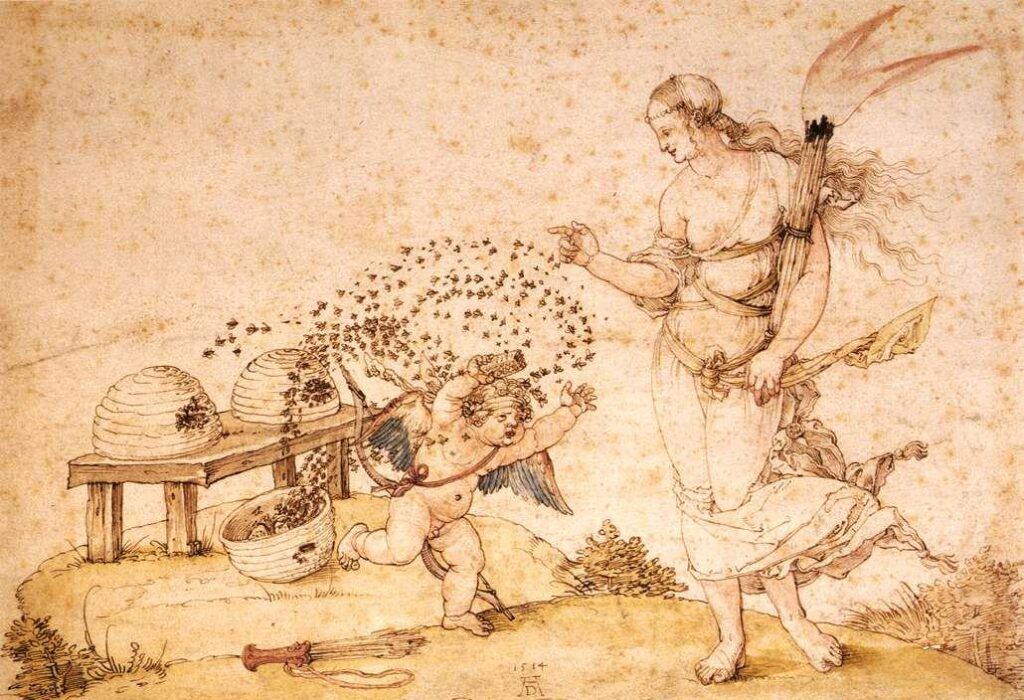
Honey, one of nature’s most precious gifts, has been cherished for its sweetness, medicinal properties, and symbolic richness for thousands of years. Across cultures and centuries, honey has played a central role in love, desire, and sexuality. From its historical uses as an aphrodisiac to its deep symbolism in erotic literature and rituals, honey is far more than just a simple sweetener. This article explores honey’s relationship to sex, tracing its significance from ancient times to the present day.
Ancient Origins: Honey as an Aphrodisiac
Honey’s association with love and passion can be traced back to ancient civilizations, where it was believed to enhance sexual vitality and pleasure. The term “honeymoon” itself originates from a tradition in which newlyweds consumed honey-based beverages, such as mead, for a full moon cycle after their wedding. This practice, common in various cultures including the Greeks, Romans, and Norse, was thought to promote fertility and ensure a blissful marriage.
In ancient Egypt, honey was often used in love potions and fertility treatments. Egyptians believed honey held divine properties and even offered it to gods associated with love and sensuality, such as Hathor, the goddess of fertility, love, and motherhood. Cleopatra, renowned for her beauty and seduction, reportedly bathed in milk and honey to maintain her soft, alluring skin.
The Greeks also held honey in high regard, often linking it to Aphrodite, the goddess of love and passion. They believed honey could increase stamina and sensual pleasure, using it in various aphrodisiac concoctions. Similarly, in ancient India, honey was a key component of Ayurvedic medicines aimed at boosting sexual health and virility.
Honey’s Symbolism in Love and Eroticism
Honey’s texture, color, and taste have made it a potent symbol of desire, indulgence, and eroticism. Its golden hue is often associated with warmth, luxury, and abundance, while its thick, slow-dripping consistency evokes imagery of sensual pleasure and indulgence.
Poets and writers throughout history have drawn on honey’s luscious qualities to depict passion and love. In the Song of Songs, one of the most erotic books of the Bible, honey is used metaphorically to describe a lover’s lips and kisses:
“Your lips drop sweetness as the honeycomb, my bride; milk and honey are under your tongue.”
This poetic association between honey and erotic love is not unique to biblical texts. Persian and Arabic poetry frequently use honey as a metaphor for intimate pleasures, describing the sweetness of a lover’s embrace or the intoxicating effect of passion.
Honey in Traditional Aphrodisiac Recipes
Across different cultures, honey has been a common ingredient in aphrodisiac recipes designed to enhance sexual vitality. Some of these include:
- Mead: Known as the “nectar of the gods,” this fermented honey beverage was believed to stimulate sexual energy and romantic desire.
- Honey and nuts: Middle Eastern cultures have long combined honey with almonds, walnuts, or pistachios as a natural libido booster.
- Milk and honey mixtures: Ancient civilizations, including the Egyptians and Greeks, often mixed honey with warm milk to promote fertility and stamina.
- Honey and ginseng: Traditional Chinese medicine paired honey with ginseng to enhance energy and sexual performance.
Even today, many modern herbal aphrodisiacs include honey as a key ingredient due to its natural ability to sustain energy levels and promote well-being.

Scientific Basis: Honey and Sexual Health
Beyond its symbolic and traditional uses, honey also offers real physiological benefits that can contribute to sexual health. Honey is rich in B vitamins, which are essential for testosterone production and energy metabolism. It also contains boron, a mineral linked to increased estrogen and testosterone levels, both of which play crucial roles in sexual desire and function.
Additionally, honey’s natural sugars provide a quick energy boost, making it a popular choice for those looking to enhance endurance in the bedroom. Some types of honey, such as raw or Manuka honey, also contain nitric oxide, which can help improve blood circulation—a key factor in sexual arousal and performance.
Honey in Modern Sensual Experiences
While honey’s use in romantic and sexual contexts dates back millennia, it continues to be a favored sensual ingredient in modern times. From edible body paints to massage oils, honey-based products are popular for intimate experiences. Some of its contemporary uses include:
- Edible honey dusting powders used for foreplay and body kissing.
- Honey-based lubricants offering a natural alternative for enhancing pleasure.
- Honey-infused massage oils used for relaxation and sensual touch.
- Honey-flavored kisses, simply incorporating it into intimate moments for added sweetness.
Cultural Love for Honey: A Lasting Legacy
From ancient fertility rituals to modern-day sensual indulgences, honey remains deeply embedded in human expressions of love and passion. It is more than a food—it is a symbol of desire, a natural aphrodisiac, and a source of pleasure in both physical and metaphorical senses.
Whether through a romantic dinner with honey-drizzled delicacies, a shared glass of mead, or the intimate use of honey-infused products, this golden nectar continues to play a role in human sensuality. Its connection to sex and desire is not just historical—it is timeless.
Honey’s sensual appeal is woven through centuries of cultural traditions, erotic poetry, and medicinal practices. With its rich texture, luscious taste, and scientifically backed benefits for sexual health, honey remains an enduring symbol of love and pleasure. Whether enjoyed in a passionate kiss, a romantic meal, or a sensual massage, honey is truly the nectar of desire.
